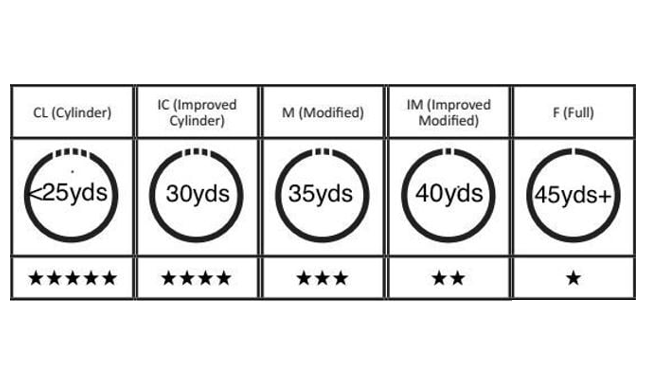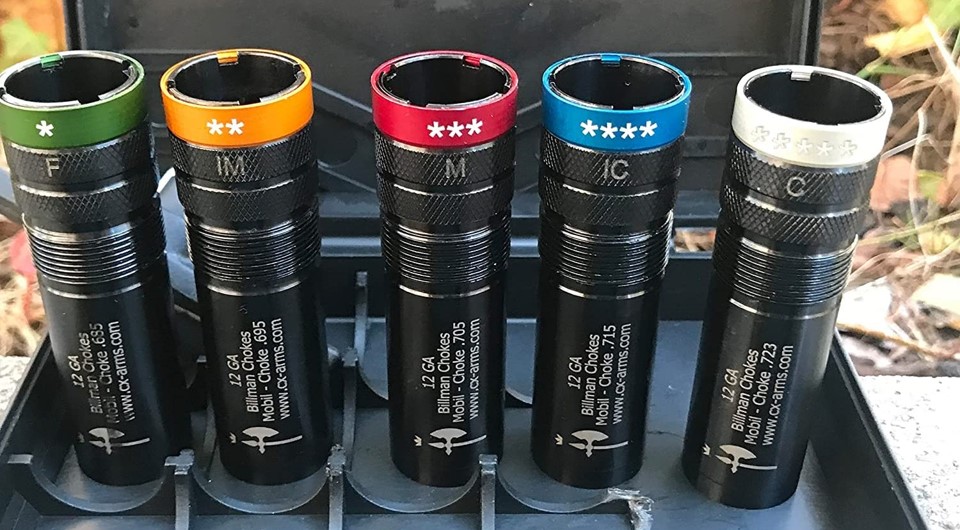
Choosing the Right Choke for Sporting Clays: A Guide
Sporting clays, often called "golf with a shotgun," challenges shooters with a variety of target types and flight patterns. As a shooter, mastering choke selection can significantly impact your performance. But with so many choke options available, which one should you use? Let’s dive into what chokes are, how they affect your shots, and which ones are best suited for sporting clays.
What is a Shotgun Choke?
A shotgun choke is a constriction at the end of the barrel that influences the spread of your shot pellets. The tighter the choke, the narrower and denser the pellet pattern; a more open choke creates a wider pattern. This spread directly affects your chance of hitting clays, especially when they vary in distance and angle.
Common Chokes and Their Patterns

- Cylinder (CYL): No constriction – the widest spread.
- Improved Cylinder (IC): Light constriction – moderate spread.
- Modified (MOD): Medium constriction – balanced pattern.
- Improved Modified (IM): Slightly tighter than MOD – effective at longer ranges.
- Full: Tight constriction – for distant targets.
- Extra Full (X-Full): Extremely tight – for maximum pellet density.
Which Choke to Use for Sporting Clays?
In sporting clays, targets vary greatly: some are close and fast, others are distant and arcing. Therefore, you’ll often need to switch chokes or choose versatile ones to handle multiple scenarios.
1. Improved Cylinder (IC) and Light Modified (LM) – The Go-To Pair
- When to Use: Short to medium-range shots (15-30 yards).
- Why: Sporting clays often have unpredictable targets, and IC or LM gives you a forgiving spread without sacrificing too much pellet density.
- Recommendation: Start with IC or LM if you are unsure about the target distance; they are excellent all-around chokes.
2. Modified (MOD) – A Versatile Option
- When to Use: Mid-range targets (25-35 yards).
- Why: A MOD choke strikes a balance between spread and density, making it suitable for medium-distance targets like crossers or mid-trajectory clays.
- Tip: If the targets are slightly inconsistent in range, MOD offers great versatility.
3. Skeet Choke – For Close Shots
- When to Use: Very close targets (10-20 yards).
- Why: Skeet chokes provide a wide spread, ensuring you don’t miss fast, close-range clays. This choke can shine for rabbits or low-angle targets.
4. Improved Modified (IM) or Full – For Longer Shots
- When to Use: Distant or edge-on targets (30-45+ yards).
- Why: IM and Full chokes keep the shot pattern tight, which helps ensure you maintain enough pellet density to break clays far away.
- Tip: Be cautious—tighter chokes leave little room for error. Use these only if you feel confident on longer shots.
Factors to Consider When Choosing Chokes
- Course Design: Sporting clay courses are designed to test a variety of skills, with target distances and angles constantly changing. Bring multiple chokes to swap during the shoot.
- Target Distance: The farther the target, the tighter the choke you’ll need to keep your pellet pattern effective.
- Target Type: Clays like rabbits or battues behave differently. For fast, rolling rabbits, a more open choke (like IC) is better, while distant battues might call for MOD or IM. For a breakdown of target types, click HERE.
- Conditions: Weather, especially wind, can influence a target’s behavior. If the wind is making targets erratic, a more forgiving choke like IC or LM can help.
Should You Use a Single Choke or a Double Setup?
In sporting clays, many shooters use shotguns with two barrels, each fitted with different chokes. This allows for quick adaptability, especially when the first and second targets in a pair are at different distances. A common combination is IC in the first barrel for closer targets and MOD or IM in the second barrel for longer shots.
Experiment and Find What Works Best
While these recommendations offer a starting point, every shooter’s style is different. Some prefer sticking to one versatile choke throughout a course, while others swap chokes based on each station’s unique challenge. The key is to practice, experiment, and understand how your shotgun performs with various chokes and loads.
If you want a deeper dive into chokes, check out our other blog post about each type of choke HERE.
Final Thoughts
Selecting the right choke for sporting clays is all about balancing spread and accuracy based on target distance and behavior. Start with versatile chokes like Improved Cylinder (IC) or Light Modified (LM), and adjust as needed for specific scenarios. With experience, you'll develop a feel for which choke works best for each shot, helping you gain consistency and confidence in every round.
Enjoy the challenge and thrill that sporting clays bring! With the right chokes and plenty of practice, you’ll be hitting more clays in no time.
